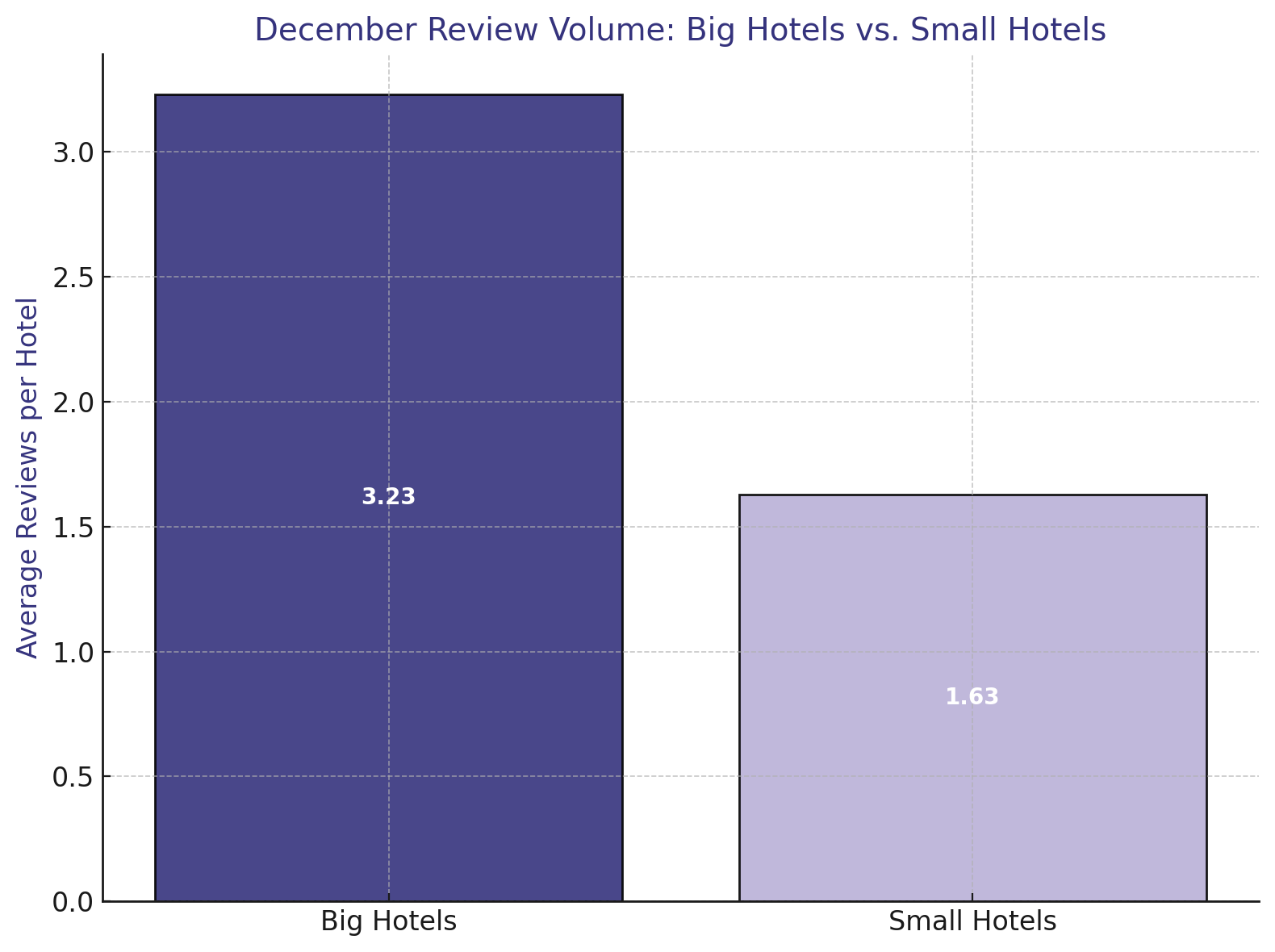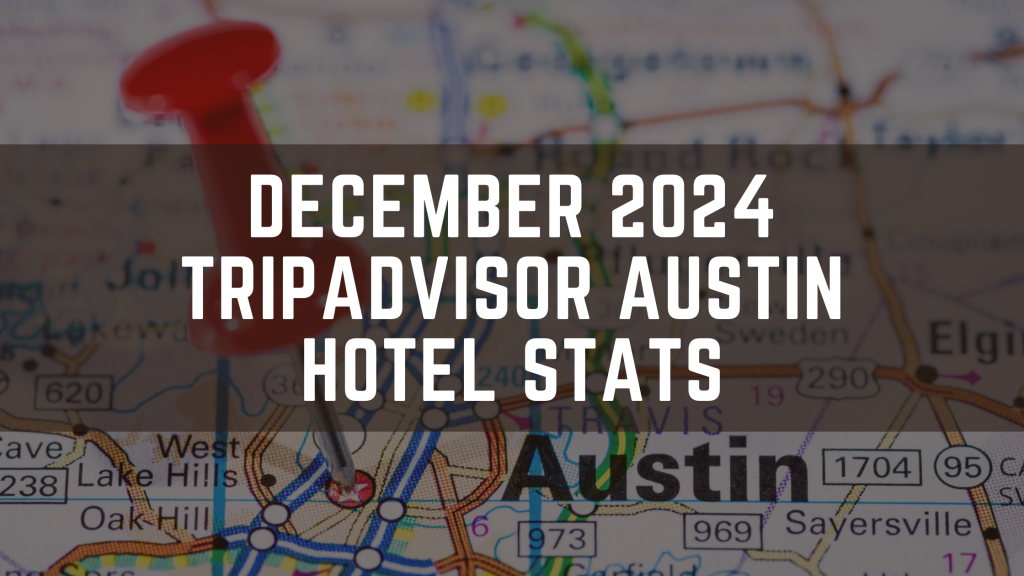We analyzed 187 hotels in Austin, Texas, to uncover the role guest engagement plays in driving success. By examining TripAdvisor rankings, response rates, and guest ratings, we found compelling connections between communication and performance. Here’s what the data reveals.
Big Hotels vs. Small Hotels: Understanding the Dynamics
Out of the 187 Austin hotels analyzed, there was a noticeable divide between big hotels (80 rooms or more) and small hotels (fewer than 80 rooms). While big hotels dominated in terms of review volume, small hotels showed strengths in guest interaction and personalization.
December Review Volume
Big hotels averaged 3.23 reviews per hotel in December, compared to 1.63 reviews per hotel for small hotels. This disparity reflects the larger capacity and higher guest traffic of big hotels during the month.

Engagement and Response Rates
Interestingly, small hotels with high response rates bridged the gap in visibility. Although they had fewer reviews, their attentiveness to guest feedback helped them maintain strong TripAdvisor rankings. Big hotels, while generating more reviews, varied widely in response rates, with some struggling to match the personalized attention smaller properties can provide.
These differences underscore how both hotel types leverage their unique strengths: big hotels thrive on scale, while small hotels excel at delivering tailored guest experiences.
Response Rates: Higher Engagement, Better Ratings
When hotels actively respond to guest reviews, the benefits are clear. Among Austin’s top 10 TripAdvisor-ranked hotels, the average response rate stood at an impressive 93.8%, with an equally high average guest rating of 4.73. In contrast, the rest of the hotels averaged just 65.8% response rate and a rating of 4.02.
This connection between engagement and guest satisfaction becomes even more apparent when examining standout performers:
- The Cambria Hotel Austin Uptown Near The Domain leads with a near-perfect response rate of 99.7% and an exceptional rating of 4.98.
- The Casa del Sol Bed and Breakfast at Lake Travis and Frame Hotel – Treehouse (formerly Kimber Modern) also shine, maintaining response rates above 99% and ratings of 4.83 and 4.92, respectively.
These hotels not only show that attentiveness boosts rankings but also highlight how quick and meaningful responses can elevate the guest experience.

Travelers’ Choice vs. Non-Travelers’ Choice Hotels
We also analyzed the impact of the “Travelers’ Choice” badge, a distinction awarded to hotels excelling in guest satisfaction. Here’s how hotels with the badge compare to those without:
Average Rating: “Travelers’ Choice” hotels scored significantly higher at 4.39 versus 3.92 for other hotels.

Average Response Rate: Hotels with the badge averaged a 79.94% response rate, compared to just 62.13% for non-badge holders.

TripAdvisor Ranking: Badge holders ranked much higher on average, at 42.93, compared to 111.76 for hotels without the badge. (lower number the better)

This data confirms the importance of both high engagement and exceptional service. Hotels that prioritize guest interaction not only earn higher ratings but are also more likely to achieve accolades like the “Travelers’ Choice” badge.
Higher Engagement Equals Better Visibility
Our findings reinforce a simple truth: hotels that prioritize guest communication tend to rank higher. Travelers value responsiveness, and a hotel that takes the time to acknowledge reviews—positive or negative—demonstrates care and commitment. This practice builds trust and attracts more guests who appreciate feeling heard.
Even more compelling, hotels with response rates above 90% were far more likely to secure a spot in the top rankings. This statistic emphasizes the importance of maintaining strong online communication to remain competitive in a bustling market like Austin.
Austin Hotels: Insights for Success
Austin’s hospitality landscape is competitive, but the data points to a winning strategy. By maintaining high response rates and focusing on guest feedback, hotels can differentiate themselves from the competition. Whether managing a boutique property or a large chain, prioritizing engagement has tangible rewards.
Final Takeaway: Engage for the Edge
The data from Austin’s hotels tells a compelling story: engagement is the backbone of success. Hotels with higher response rates consistently rank better and achieve higher guest satisfaction. In a competitive market, acknowledging your guests isn’t just good practice—it’s the key to thriving.
If you are interested in learning how a reputation management strategy can benefit your business, we invite you to email us via our secure contact form to set up a no-pressure consultation or call us at 855-979-6800.




